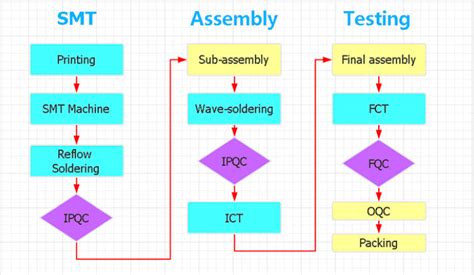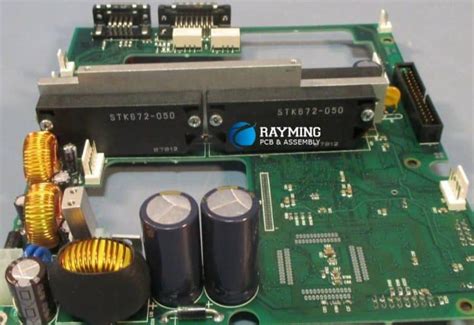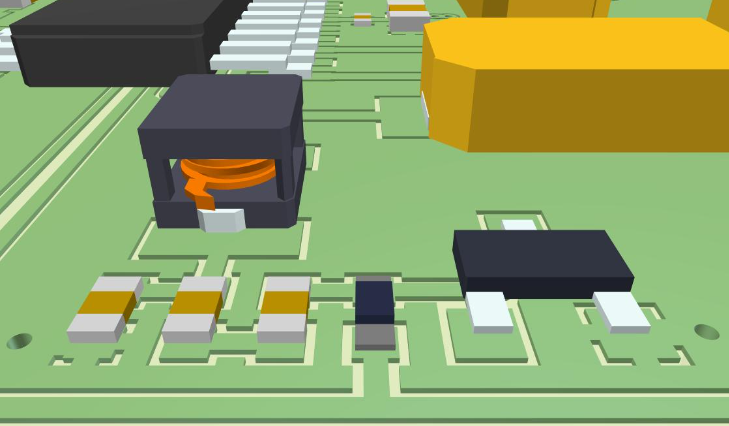Flex jumper pcb
Advantages Of Using Flex Jumper PCB In Modern Electronics
Flex jumper PCBs, or flexible printed circuit boards, have become increasingly integral to the design and functionality of modern electronics. These innovative components offer a range of advantages that make them indispensable in various applications, from consumer electronics to industrial machinery.
One of the primary benefits of using flex jumper PCBs is their ability to accommodate complex designs.
Unlike traditional rigid PCBs, flex jumpers can be bent, twisted, and folded into a variety of shapes, allowing for greater design flexibility. This adaptability is particularly valuable in compact devices where space is at a premium, such as smartphones, tablets, and wearable technology. By enabling more efficient use of available space, flex jumper PCBs contribute to the miniaturization of electronic devices, a trend that continues to dominate the industry.
In addition to their design flexibility, flex jumper PCBs offer enhanced reliability and durability.
The materials used in these circuits are typically more resilient to environmental stressors, such as vibration, shock, and temperature fluctuations, compared to their rigid counterparts. This makes them ideal for use in environments where traditional PCBs might fail, such as automotive and aerospace applications. The inherent flexibility of these circuits also reduces the risk of mechanical failure, as they can absorb and dissipate mechanical stress more effectively. Consequently, devices that incorporate flex jumper PCBs often enjoy longer lifespans and require less frequent maintenance, leading to cost savings over time.
Moreover, flex jumper PCBs contribute to improved electrical performance.
The ability to design circuits in three dimensions allows for shorter and more direct electrical paths, which can reduce signal loss and improve overall performance. This is particularly beneficial in high-frequency applications where maintaining signal integrity is crucial. Additionally, the reduced need for connectors and interconnects in flex jumper designs can minimize potential points of failure and further enhance the reliability of the electronic system. As a result, devices that utilize these advanced circuits often exhibit superior performance characteristics compared to those relying on traditional PCB designs.
Another significant advantage of flex jumper PCBs is their potential for cost savings in both manufacturing and assembly.
The reduction in the number of components and connectors not only simplifies the assembly process but also decreases the likelihood of assembly errors. This can lead to lower production costs and faster time-to-market for new products. Furthermore, the lightweight nature of flex jumper PCBs can contribute to reduced shipping costs, particularly for large-scale production runs. As manufacturers continue to seek ways to optimize production efficiency and reduce expenses, the adoption of flex jumper PCBs is likely to increase.
In conclusion, the advantages of using flex jumper PCBs in modern electronics are manifold. Their design flexibility, enhanced reliability, improved electrical performance, and potential for cost savings make them an attractive option for a wide range of applications. As technology continues to evolve and the demand for smaller, more efficient devices grows, the role of flex jumper PCBs in the electronics industry is poised to expand. By embracing these innovative components, manufacturers can not only meet the current demands of the market but also anticipate and adapt to future technological advancements.

Design Tips For Creating Efficient Flex Jumper PCB Layouts
Designing efficient flex jumper PCB layouts requires a nuanced understanding of both the mechanical and electrical properties of flexible circuits. Flex jumper PCBs, known for their ability to bend and twist, are increasingly used in applications where space constraints and dynamic movement are critical. To create an effective design, one must consider several key factors that ensure both functionality and durability.
Firstly, understanding the material properties is essential.
Flex PCBs are typically made from polyimide, a material known for its flexibility and thermal stability. When designing a flex jumper PCB, it is crucial to select the appropriate thickness of the polyimide substrate. A thinner substrate allows for greater flexibility but may compromise mechanical strength. Conversely, a thicker substrate provides robustness but limits the degree of bending. Therefore, balancing these aspects based on the specific application is vital.
Moreover, the layout of the traces plays a significant role in the performance of a flex jumper PCB.
It is advisable to use curved traces instead of sharp angles, as sharp corners can become stress concentration points, leading to potential failure over time. Additionally, maintaining uniform trace widths and spacing helps in reducing impedance variations, which is particularly important in high-frequency applications. Employing a staggered or offset trace pattern can further enhance the mechanical reliability by distributing stress more evenly across the flex area.
Transitioning to the topic of vias, their placement and design are equally important.
Vias should be minimized in the flexing regions to prevent mechanical stress from causing fractures. When necessary, teardrop-shaped pads can be used to reinforce the connection points, thereby reducing the risk of delamination. Furthermore, it is beneficial to use blind or buried vias to maintain a smooth surface on the flex layers, which aids in reducing stress concentrations.
In addition to these considerations, the choice of adhesive and coverlay materials can significantly impact the durability of a flex jumper PCB.
The adhesive must be flexible enough to accommodate bending without cracking, while the coverlay should protect the circuit from environmental factors such as moisture and dust. Selecting materials that can withstand the operating temperature range of the application is also crucial to prevent thermal degradation.
Another critical aspect is the bend radius, which refers to the minimum radius the flex circuit can be bent without causing damage.
Adhering to the recommended bend radius is essential to avoid mechanical failure. As a rule of thumb, the bend radius should be at least ten times the thickness of the flex circuit. Designing with a larger bend radius not only enhances reliability but also extends the lifespan of the PCB.
Finally, testing and prototyping are indispensable steps in the design process.
Conducting thorough simulations and physical tests can help identify potential issues before mass production. By iterating on the design based on test results, one can optimize the layout for both performance and manufacturability.
In conclusion, designing efficient flex jumper PCB layouts involves a careful balance of material selection, trace design, via placement, and mechanical considerations. By adhering to these design tips, engineers can create flexible circuits that meet the demands of modern electronic applications, ensuring both reliability and efficiency.

Common Applications Of Flex Jumper PCB In Various Industries
Flex jumper PCBs, or flexible printed circuit boards, have become an integral component in various industries due to their adaptability and efficiency. These PCBs are designed to connect different parts of a circuit, allowing for flexibility in design and application. Their unique ability to bend and conform to different shapes makes them particularly valuable in environments where space is limited or where the circuit needs to be dynamic. As we explore the common applications of flex jumper PCBs across different sectors, it becomes evident how their versatility and reliability have revolutionized modern technology.
In the consumer electronics industry, flex jumper PCBs are widely used in devices such as smartphones, tablets, and laptops.
These devices require compact and lightweight components to maintain their sleek designs, and flex jumper PCBs provide the perfect solution. By allowing for three-dimensional configurations, these PCBs enable manufacturers to maximize space efficiency without compromising on performance. Moreover, their ability to withstand repeated bending and flexing makes them ideal for devices that are frequently handled and moved.
Transitioning to the automotive industry, flex jumper PCBs play a crucial role in the development of modern vehicles.
With the increasing demand for advanced features such as infotainment systems, navigation, and driver assistance technologies, the need for reliable and flexible circuit solutions has grown. Flex jumper PCBs are used to connect various electronic components within a vehicle, ensuring seamless communication between systems. Their durability and resistance to vibration and temperature fluctuations make them particularly suitable for the harsh conditions often encountered in automotive environments.
In the medical field, the application of flex jumper PCBs is equally significant.
Medical devices, such as pacemakers, hearing aids, and diagnostic equipment, require precise and reliable electronic components. Flex jumper PCBs offer the necessary flexibility and miniaturization needed for these devices, allowing for intricate designs that can be tailored to specific medical requirements. Additionally, their biocompatibility and ability to endure sterilization processes make them a preferred choice in medical applications.
The aerospace industry also benefits from the use of flex jumper PCBs.
In this sector, weight reduction and reliability are paramount. Flex jumper PCBs contribute to these goals by providing lightweight and robust solutions for connecting various electronic systems within aircraft and spacecraft. Their ability to withstand extreme conditions, such as high altitudes and temperature variations, ensures the safety and efficiency of aerospace operations. Furthermore, their flexibility allows for innovative design possibilities, which are essential in the development of cutting-edge aerospace technologies.
In the realm of industrial applications, flex jumper PCBs are employed in machinery and equipment that require dynamic and reliable electronic connections.
These PCBs are used in robotics, automation systems, and control panels, where their flexibility and durability are crucial for maintaining operational efficiency. By facilitating complex circuit designs and reducing the need for bulky wiring, flex jumper PCBs enhance the performance and reliability of industrial systems.
In conclusion, the widespread adoption of flex jumper PCBs across various industries underscores their importance in modern technology. Their unique properties, including flexibility, durability, and space efficiency, make them indispensable in applications ranging from consumer electronics to aerospace. As technology continues to advance, the demand for innovative and adaptable circuit solutions like flex jumper PCBs is expected to grow, further solidifying their role in shaping the future of electronic design and application.

Challenges And Solutions In Manufacturing Flex Jumper PCB
The manufacturing of flex jumper PCBs, or flexible printed circuit boards, presents a unique set of challenges that require innovative solutions to ensure efficiency and reliability. As the demand for smaller, lighter, and more versatile electronic devices continues to grow, the need for flexible PCBs has become increasingly prominent. These circuits offer the advantage of being able to bend and conform to various shapes, making them ideal for applications in compact and dynamic environments. However, the very properties that make flex jumper PCBs desirable also introduce complexities in their production.
One of the primary challenges in manufacturing flex jumper PCBs is the selection of appropriate materials.
Unlike rigid PCBs, flexible circuits require substrates that can withstand repeated bending and flexing without compromising electrical performance. Polyimide is commonly used due to its excellent thermal stability and flexibility. However, the choice of adhesive and conductive materials also plays a crucial role in ensuring the durability and functionality of the final product. Manufacturers must carefully balance these materials to achieve the desired flexibility while maintaining electrical integrity.
Moreover, the manufacturing process itself poses significant hurdles.
Traditional PCB fabrication techniques often need to be adapted or entirely rethought to accommodate the unique properties of flexible materials. For instance, the etching process must be precisely controlled to prevent damage to the delicate substrate. Additionally, the lamination process requires careful attention to pressure and temperature settings to avoid warping or delamination. These factors necessitate a high level of expertise and precision, often leading to increased production costs and time.
In addition to material and process challenges, the design of flex jumper PCBs requires meticulous planning.
Designers must account for the mechanical stresses that the circuit will encounter in its application. This involves considering factors such as bend radius, flex cycles, and the potential for dynamic movement. Failure to adequately address these considerations can result in premature failure of the circuit, leading to costly repairs or replacements. Advanced simulation tools and design software have become invaluable in predicting and mitigating these issues, allowing for more robust and reliable designs.
Despite these challenges, several solutions have emerged to enhance the manufacturing of flex jumper PCBs.
Innovations in material science have led to the development of more resilient substrates and adhesives, capable of withstanding harsher conditions. Additionally, advancements in automated manufacturing processes have improved precision and repeatability, reducing the likelihood of defects. The integration of quality control measures, such as real-time monitoring and inspection systems, further ensures that any issues are promptly identified and addressed.
Furthermore, collaboration between designers and manufacturers has proven essential in overcoming the complexities of flex jumper PCB production.
By working closely together, these stakeholders can optimize designs for manufacturability, ensuring that the final product meets both performance and cost requirements. This collaborative approach not only streamlines the production process but also fosters innovation, as new ideas and techniques are shared and implemented.
In conclusion, while the manufacturing of flex jumper PCBs presents a range of challenges, ongoing advancements in materials, processes, and collaboration offer promising solutions. As technology continues to evolve, the demand for flexible circuits is likely to increase, driving further innovation in this field. By addressing the inherent complexities with strategic solutions, manufacturers can continue to meet the growing needs of the electronics industry, delivering high-quality, reliable products that push the boundaries of what is possible.







